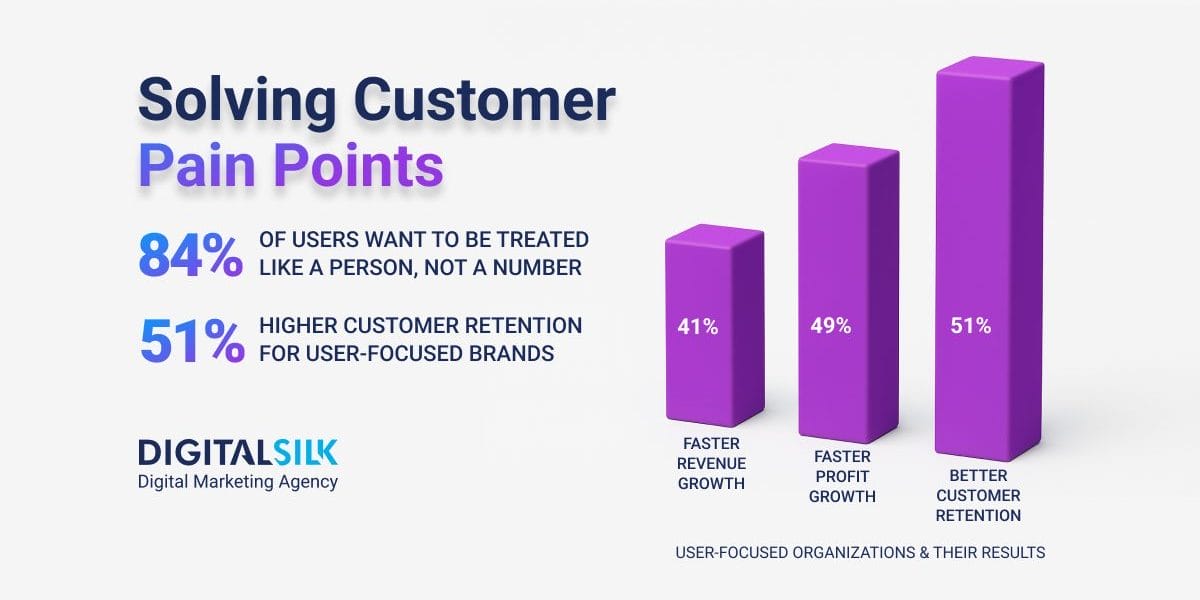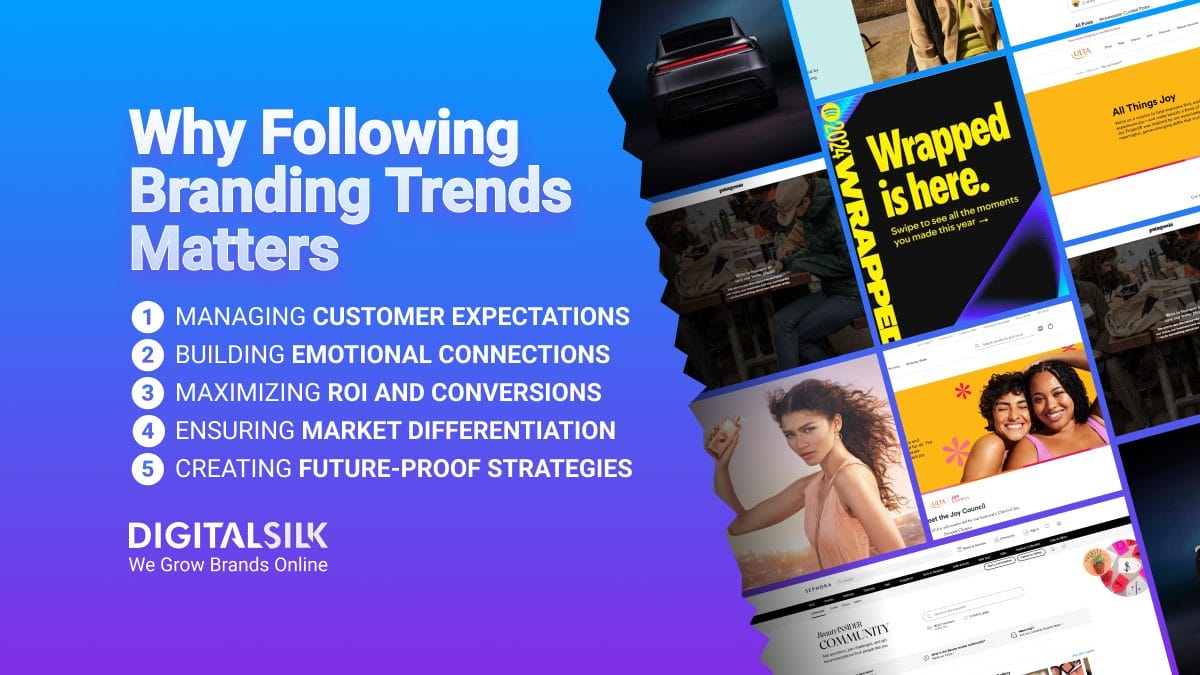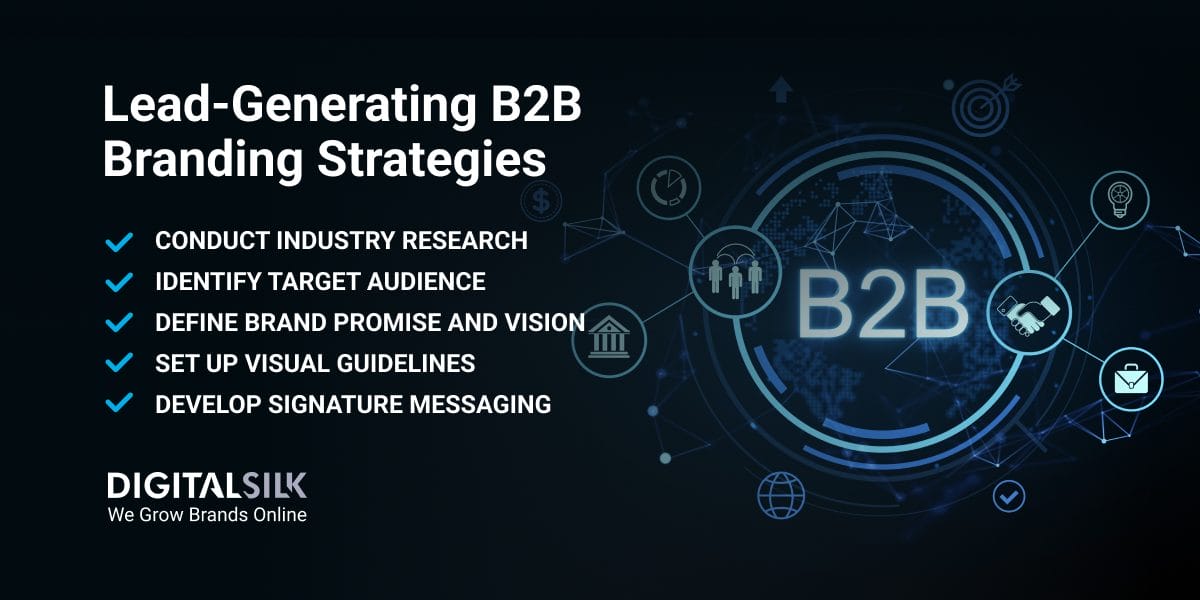Customer Pain Points: Key Highlights
-
Clarity earns trust: Vague surveys and surface-level data miss what open-ended questions and real conversations reveal.
-
Frontline teams know first: Objections in sales calls and repeated support issues expose patterns before metrics do.
-
Friction drives churn: Confusing checkouts, delayed handoffs and missing info quietly push customers toward competitors.
The moment a customer feels misunderstood is often the moment they start looking elsewhere.
That quiet shift — from interest to irritation — rarely shows up in a dashboard but spreads quickly in inboxes and conversations.
With 73% of people citing customer experience as a deciding factor in what they buy, how you identify and respond to their frustrations isn’t just part of customer support — it’s part of long-term business growth.
Throughout this post, we’ll look at practical ways to uncover customer pain points, decode what’s behind them, and turn that insight into communication that builds trust and drives action.
How To Identify Customer Pain Points
If customers are disengaging or choosing a competitor, it’s usually because something didn’t sit right — whether they said it directly or not.
Understanding consumer pain points requires deliberate conversations, cross-team collaboration and a closer look at the data behind everyday behavior.
1. Use Customer Surveys And Interviews
Surveys and interviews offer direct access to how your customers think and feel, but getting meaningful input requires asking questions that go beyond ratings or yes/no checkboxes.
With average survey response rates hovering around 28%, it’s important to make the most of each interaction by focusing on clarity, relevance and open-ended prompts that encourage depth.
You can pinpoint customer experience pain points by asking things like:
- “What was the most frustrating part of your experience with us?”
- “What were you trying to fix or accomplish when you first found our product?”
- “What could we have done differently after your purchase?”
Stick to real scenarios, not hypotheticals. Instead of asking what a customer might do, ask what they did — then follow up with “why” to uncover the reasoning behind it.
Interviews should be led with curiosity, not an agenda — let customers guide the conversation and describe their experience in their own words, so you can gain proactive insights into your audience.
2. Talk to Your Sales And Support Teams
The most overlooked source of customer insight often sits just one floor — or one Slack message — away.
Sales and support teams are exposed to objections, complaints and unmet expectations long before they’re captured in a formal report.
When companies take that input seriously and build around what customers need, the results are significant, as customer-obsessed brands see 51% better retention and 49% faster profit growth.
To uncover meaningful patterns, ask:
- “Which problems come up frequently in support tickets and sales calls?”
- “Where do prospects hesitate and what stops them from converting?”
- “What do repeat customers mention again and again?”
These teams aren’t just handling day-to-day operations — they’re surfacing what the customer experience feels like in real time.
Use that to spot gaps, guide priorities and make decisions that prioritize customer needs.
3. Monitor Online Reviews And Forums
Online reviews often reveal issues customers don’t share directly through surveys or support.
In fact, 75.5% of consumers say reviews influence their purchasing decisions and 75% feel more confident in a brand after reading a detailed positive review.
These numbers make it clear: public feedback doesn’t just reflect your reputation — it actively shapes it.
To turn this feedback into something actionable:
- Collect reviews from a range of platforms, including Google, Yelp, Amazon, app stores or social media
- Group responses by common themes such as pricing, usability or support quality
- Focus on the wording and emotional tone of reviews, not just the star rating
- Monitor shifts in sentiment tied to product updates or policy changes
Forums like Reddit and niche industry communities offer even more unfiltered commentary, especially in B2B or technical markets.
Finally, competitor reviews often reveal what customers still want but aren’t getting — which gives you a clear opportunity to meet those expectations first.
4. Analyze Customer Behavior And Data
Customers pay attention to how well a brand pays attention.
When companies tailor experiences based on actual behavior — what people browse, skip, return to or buy — those efforts don’t go unnoticed.
In fact, 66% of consumers say they’re more likely to keep shopping with brands that remember their preferences, because relevance makes interactions feel more worthwhile.
Behavioral data gives you the clearest view of where your experience supports that relevance and where it falls apart.
You can track the following key performance indicators (KPIs):
- Drop-offs during onboarding, checkout or subscription flows
- Repeated support requests tied to specific features or pages
- Cart abandonment trends and unusual bounce patterns
- Time-to-resolution for common service issues
Tools like heat maps and session recordings show where people hesitate, click repeatedly or abandon an offer.
Similarly, CES surveys help flag moments that require more effort than expected, which directly increases conversions and engagement.
When you analyze these customer pain points with intent, they become a roadmap — not just to smoother interactions, but to conversations and campaigns that feel personal without being intrusive.
How To Solve Customer Pain Points
Identifying issues is only useful if you’re prepared to do something about them.
The value lies in what happens next — how you address recurring problems in ways that improve experience and build trust.
The following strategies offer a practical framework for tackling consumer pain points and solutions that meet the expectations behind them.
1. Streamline Internal Processes
Customer problems often trace back to operational inefficiencies — slow handoffs, inconsistent information or unnecessary steps that complicate user journeys.
Streamlining internal processes isn’t about cutting corners, but about closing the gap between what customers expect and what actually happens.
Start by reviewing workflows that directly impact the customer experience:
- Where are customers waiting longer than they should?
- Which tasks require repeated clarification or back-and-forth?
- Are internal tools slowing down teams that interact with customers?
Addressing these breakdowns might involve eliminating redundant steps, improving handoffs between departments or rethinking approval chains that delay service.
2. Enhance Support Channels And Communication
Support is often the last stop before a customer leaves — or the turning point that earns their loyalty.
Making it easier for them to reach you and more satisfying once they do, is one of the clearest ways to reduce frustration and build trust.
Start by expanding how customers can reach your team, but make each channel feel consistent.
Whether someone contacts you through live chat, a support form or an in-app tool, they should experience the same level of responsiveness and clarity.
Internal systems like automated ticket routing help avoid delays or duplicate responses.
To improve support across touchpoints:
- Use unified systems so customers don’t have to repeat themselves
- Make wait times and next steps clear at every stage of the process
- Review support transcripts and resolution times regularly to spot breakdowns
- Share feedback from support channels with product and marketing teams
| What To Improve | Why It Matters |
| Channel Consistency | Customers should get the same experience across all touchpoints |
| Intelligent Routing | Speeds up resolution and prevents duplicate handling |
| Expectation Setting | Clear next steps reduce anxiety and build trust |
| Feedback Integration | Support insights inform product, messaging and UX |
3. Adjust Pricing Structure Or Product Features
Even when your product is the right fit, pricing can still be a dealbreaker.
68% of consumers say they’re more price-conscious when making a purchase, especially when options feel rigid or don’t reflect their needs.
That means value has to be easy to understand and simple to act on.
Flexible pricing models can help:
- Tiered plans that reflect different levels of usage or complexity
- Custom bundles that let customers choose what they actually need
- Usage-based billing that scales with business growth
But sometimes, the issue isn’t the price — it’s what’s included. Customers are more likely to pay more when they see clear, immediate benefits.
Consider whether any features are locked behind higher tiers without a compelling reason — or if parts of the product go unused because they’re hard to find or don’t work as expected.
When pricing comes under pressure, smart product adjustments can make all the difference.
Reworking packaging, delivery, or feature sets — without compromising function — can keep perceived value high even in price-sensitive moments.
4. Implement Automation And Self-Service Tools
As your customer base grows, relying solely on one-to-one support becomes less scalable — and for many customers, unnecessary.
When people encounter routine issues or simple questions, they expect to resolve them quickly.
The goal isn’t to eliminate human interaction, but to remove the friction of waiting for help when the solution could be readily available.
That expectation comes with responsibilities — 80% of consumers want to know whether they’re interacting with a human or a bot and 81% believe the way a company handles personal data reflects how much it respects its customers.
These numbers highlight the importance of building automation that’s both transparent and thoughtfully designed.
To make automation work in the customer’s favor:
- Make it clear when communication is automated and offer an option to escalate
- Use actual support queries to shape your help center and FAQs
- Review usage data to refine self-service tools over time
- Be selective about what data is collected automatically and communicate its purpose
When automation and self-service tools are handled with intention, they don’t just reduce workload — they give customers faster, cleaner paths to resolution while reinforcing a sense of autonomy and trust.
4 Common Types Of Customer Pain Points
Most customer frustrations fall into clear patterns, but they’re often overlooked because businesses treat them as isolated complaints instead of signs of broader issues.
When 84% of people say they want to be treated like a person, not a number, it’s a reminder that solving pain points is about attention to detail, consistency and thoughtful experience design.
1. Financial Pain Points
Financial concerns often trigger the strongest resistance from customers, especially when the price doesn’t match the perceived value.
These pain points surface as sticker shock, hidden fees or the creeping feeling that a product or service just isn’t worth it.
For instance, 48% of U.S. customers abandon their purchases during checkout due to unexpected extra costs — the most common reason for cart abandonment.
That means everything from last-minute shipping charges to unclear pricing structures can quietly sabotage conversions.
Customers facing financial pain points might:
- Question if they’re truly getting value for their money
- Get frustrated by charges that feel like surprises
- Feel overwhelmed by recurring subscription costs
- Hesitate to invest in something that seems overpriced or incomplete
Even if your offer aligns perfectly with their needs, price friction alone can stop the sale.
What’s worse, longtime customers may walk away if they feel rising costs aren’t matched by added value.
2. Process Pain Points
When buying or interacting with a brand feels more complicated than it should, that’s a process pain point — and customers are quick to spot it.
These problems come from internal workflows that spill into the customer experience, which introduces unnecessary complexity and hinders brand preference.
With an average cart abandonment rate of over 70.19% globally — and nearly 81% in beauty and care — these issues are rarely about the product itself, but about the hoops people have to jump through to get it.
Common signs include:
- Multi-step checkouts that slow down transactions
- Delayed or inconsistent delivery information
- Fragmented or outdated help content
- Long onboarding or setup processes for new users
These moments of friction can quietly degrade the brand experience. Clean up the journey by aligning internal processes with real customer expectations, keeping steps logical and timelines transparent.
3. Support Pain Points
Support pain points cut deeper than inconvenience — they suggest the company isn’t listening.
After a poor experience, only 48% of consumers reach out to the business directly.
The rest respond in silence or frustration: 47% vent to friends and family and 40% stop buying altogether.
That means most support issues don’t just risk customer churn — they multiply it.
Some telltale signs include:
- Long wait times or repeated transfers to different departments
- Customer service agents who lack the answers or authority to resolve issues
- Frustrating self-service tools that don’t reflect real user needs
- Lack of follow-up or inconsistent communication
Customers want help that feels human, not scripted. Investing in a smarter support experience — whether it’s better training or better systems — signals that your business is paying attention where it matters most.
4. Productivity Pain Points
Productivity pain points arise when a product or service makes tasks harder than they should be.
These issues often aren’t flagged in surveys or reviews, but they quietly impact how customers feel about your brand.
Since 53% of customers say the quality of goods and services is the most important reason they stay loyal, poor usability becomes a clear reason to leave.
They often look like:
- Interfaces that overcomplicate basic actions
- Features that require more manual input than expected
- Performance that’s inconsistent or disruptive
- Tools that take more time to manage than they’re worth
Addressing these problems starts with simplifying the experience and removing unnecessary steps that slow people down.
Turn Customer Pain Points Into Growth Opportunities With Digital Silk
Addressing customer pain points is a strategic responsibility that directly impacts retention, revenue and reputation.
The goal is to connect day-to-day operations with the realities of customer experience and build systems that consistently resolve the issues that matter most.
When that alignment is in place, loyalty grows — and so does the business.
Digital Silk’s in-house branding and marketing specialists use data-driven and engagement-focused strategies to target high-intent audiences, refine messaging at every stage of the funnel and drive measurable growth across digital touchpoints.
As a recognized web design agency, our services include:
- Digital marketing
- SEO services
- Social media marketing
- Paid advertising
- Branding and custom web design
Our experts take a proactive but consultative approach for each project we undertake and maintain complete transparency throughout its lifecycle to deliver tangible results.
Contact our team, call us at (800) 206-9413 or fill in the Request a Quote form below to schedule a consultation.
"*" indicates required fields









